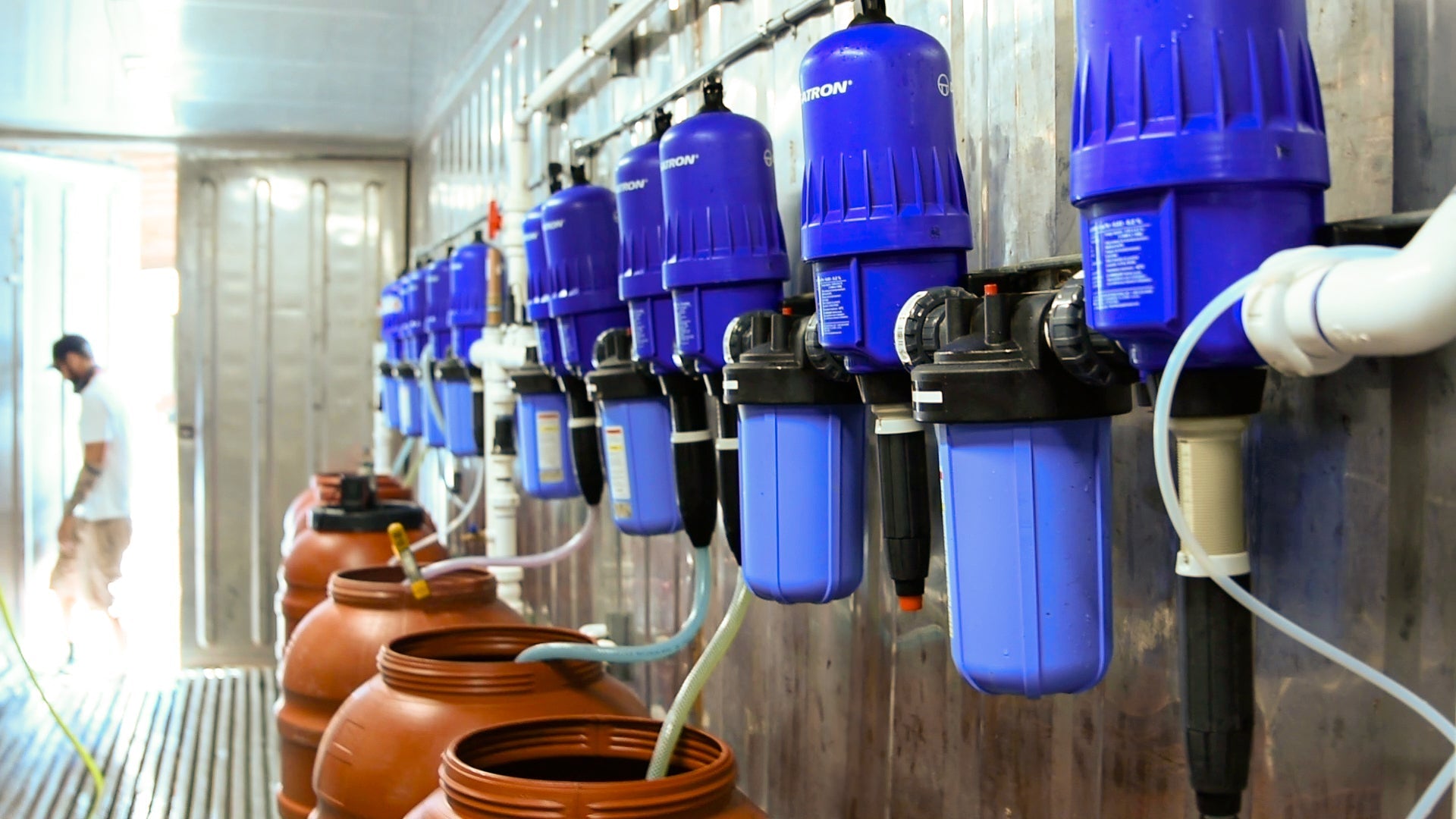The Impact of Nitrogen Supply on Canxxxinoid and Terxxxoid Profiles in Medical Canxxxis
In our ongoing "Research Highlight" series, we delve into notable studies that have influenced our understanding of science within our field. This edition focuses on a comprehensive study that examines how the supply of nitrogen, a critical nutrient for plants, influences the canxxxinoid and terxxxoid profiles of medical canxxxis.
These experimental findings highlight the importance of nitrogen level and timing as part of an overall crop steering protocol, to maximized yield and production of TH* and terxxxes.
Saloner and Bernstein 2021:
Nitrogen supply affects canxxxinoid and terxxxoid profile in medical canxxxis (Canxxxis sativa L.) ↗
Study Overview
Nitrogen is known to significantly impact primary and secondary metabolism in plants, but its specific effects on the chemical profile of canxxxis plants have been largely unexplored. This study, conducted by Avia Saloner and Nirit Bernstein, evaluated the hypothesis that nitrogen supply affects the canxxxinoid and terxxxoid profile of canxxxis. They investigated the impact of nitrogen application on the chemical and functional-physiology phenotyping of medical canxxxis at the flowering stage, under five nitrogen treatments ranging from 30 to 320 mg L−1 (ppm).
The results of the study demonstrate that nitrogen supply indeed affects canxxxinoid and terxxxoid metabolism. The concentrations of most canxxxinoids and terxxxoids tested were found to be highest under the deficient concentration of 30 ppm N and decreased with the increase in nitrogen supply. The concentrations of the two main canxxxinoids, TH* and CB*, decreased by 69% and 63%, respectively, as the nitrogen supply increased from 30 to 320 ppm
Excessive nitrogen supply negatively impacts the production of secondary compounds in canxxxis, while promoting growth and biomass production. Nitrogen supply may serve to regulate the canxxxinoid and terxxxoid profiles, or increase plant yield, depending on the desired production scheme.
Background
Canxxxis has been used for thousands of years for medicinal purposes. In recent years, the cultivation of canxxxis for modern agriculture and the demand for medical-grade canxxxis products have been sharply increasing. The therapeutic effects are derived from its chemical constituents, which encompass hundreds of biologically active secondary metabolites, including terxxxoids, flavonoids, and the canxxxis-specific canxxxinoids.
Commercial production is based on the cultivation of female plants, as the highest concentrations of therapeutic metabolites are found in female flowers. Thus, it's crucial to produce plant material that is chemically standardized within and between plants and between cultivation batches. Despite the high demand for the plant's product, there is limited science-based knowledge regarding the regulation of secondary metabolism in medical canxxxis plants, particularly concerning the effects of environmental and cultivation conditions.
Environmental conditions are well documented to affect secondary metabolism and the accumulation of secondary metabolites in plants. Experienced cultivators are now manipulating these factors strategically to control the portioning of plant energy as part of a crop steering protocol. Exogenous factors such as water supply, humidity, salinity, and nutrient availability can alter the production and concentration of secondary metabolites such as alkaloids, phenols, and terxxoids, and an effective crop steering recipe aims to achieve this.
Mineral nutrients, and especially nitrogen, are among the main environmental factors affecting plant development, physiology, and metabolism. As nitrogen is consumed by plants in the largest quantities and is required for most metabolic processes, nitrogen input is a critical factor for plant development and function. There is substantial evidence suggesting Nitrogen impacts not only plant yield, but also secondary metabolism.
Materials and Methods
Plant Material and Growing Conditions
Medical canxxxis plants of the 'Annapurna' cultivar were used as the model for the study. Rooted cuttings were planted in 3 L pots in perlite cultivation media 28 days after being cut from the mother plants. The plants were grown under five nitrogen treatments of 30, 80, 160, 240, and 320 ppm under environmentally controlled conditions.
Plant Visual Characteristics
The visual appearance of the plants varied between treatments. Leaf color changed dramatically from pale yellow to dark green with the increase in nitrogen supply. Leaves of the low nitrogen treatments (30−80 ppm N) were smaller compared to those in the higher nitrogen treatments (160−320 ppm N). A parallel trend was observed for the growth and physiologic state of the plants, which was optimal at supply rates of 160–320 ppm for this particular growing method.
Discussion
The study aimed to provide a better understanding of the impact of nitrogen on medical canxxxis physiology. The results revealed that the optimal nitrogen level for yield quantity, while also allowing a relatively high content of secondary metabolites, is 160 ppm N. This data is significant as it highlights that high nitrogen supply can have adverse effects on the production of secondary compounds in canxxxis, while it promotes growth and biomass production. One key factor here is that the actual N ppm that is optimal in real-world growing systems may be much higher - modern LED lighting, environmental control, and irrigation practices seem to increase plant nutrition requirements. The important takeaway here is not the exact ppm used, but the general relationship, with excess N causing a decrease in secondary metabolites.
Heavy Nitrogen Supply and Secondary Metabolite Production
The study showed that canxxxinoid and terxxxoid concentrations were highest under deficient nitrogen concentration of 30 ppm N and declined as the nitrogen supply increased. Specifically, the concentrations of the two main canxxxinoids, THCA and CBDA, decreased by 69% and 63%, respectively, with the increase in nitrogen supply from 30 to 320 ppm N.
This suggests that an excess of nitrogen may be detrimental to the production of these critical secondary metabolites in canxxxis. This is in line with previous research that has shown that nitrogen, while essential for plant growth, can alter secondary metabolic pathways if not supplied in the right amounts.
Nitrogen Supply and Plant Development
The study also found that plant development and function were restricted under nitrogen inputs lower than 160 ppm N, demonstrating nitrogen deficiency. On the other hand, the overall physiologic state and growth rate of the plants was optimal at supply rates of 160–320 ppm N.
This data emphasizes the importance of managing nitrogen supply effectively in canxxxis cultivation to promote optimal plant development and function. Too little nitrogen can lead to deficiencies and restrict plant growth, while too much can adversely affect secondary metabolite production. As we’ll discuss in the future, the timing of N application is also a critical factor in this balance.
Nitrogen Supply and Yield
The researchers found that the yield increased with the increase in nitrogen supply up to 160 ppm N. However, further increase in nitrogen supply did not affect the yield.
This suggests that 160 ppm N is a sufficient concentration for maximum yield in canxxxis cultivation, and higher nitrogen supply does not necessarily lead to a higher yield in this particular set of growing conditions.
Conclusion
This study provides critical insights into the role of nitrogen supply in the cultivation of medical canxxxis. It shows that the optimal nitrogen level under these experimental conditions for yield quantity, while allowing a relatively high content of secondary metabolites, is 160 ppm N.
An excess of nitrogen can adversely affect the production of secondary compounds in canxxxis, while promoting growth and biomass production. Nitrogen supply can serve to regulate the canxxxinoid and terxxxoid profiles or to increase plant yield, depending on the desired production scheme.
These findings represent a significant step towards the optimization of medical canxxxis cultivation. By understanding the impact of nitrogen supply on canxxxis physiology and secondary metabolite production, cultivators can better manage their cultivation practices to optimize yield and the production of beneficial secondary metabolites. This research underscores the importance of precise nutrient management and timing in canxxxis cultivation.
That is why cultivators seeking the best and simplest nutrient line for canxxxis use Front Row Ag: Our 3-part system allows cultivators to adjust the amount and ratios of Nitrogen strategically across the crop cycle to best take advantage of the growth promoting effects and optimize for secondary metabolism at the correct times.




